Fisheye Effects And Their Impact on Light Performance
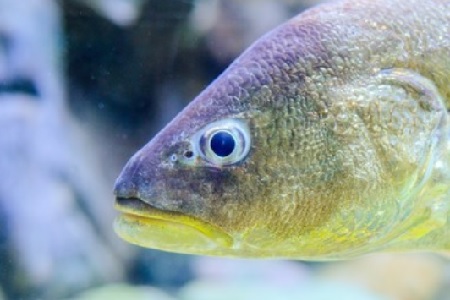
What has a fish got to do with buying a diamond? Well, if your diamond’s appearance resembles that of a fisheye, there’s nothing to rejoice about. You have just made a bad mistake and purchased a terribly cut diamond.
In this write up, you are going to find out what a fisheye diamond is (with real-life examples) and how you can avoid buying such diamonds…
So, What is a Fish Eye Effect in a Diamond?
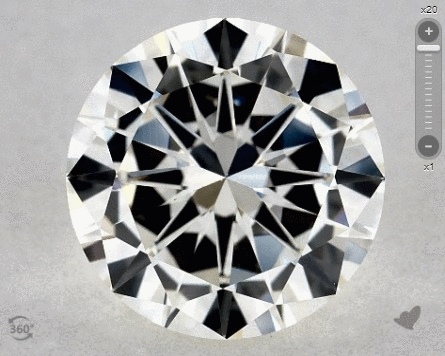
This diamond has a fish eye and a really dark ugly contrast patterning.
When diamonds are cut too shallow, the internal reflections of the girdle would be seen inside the table facet. This creates an image of a grey ring that is distracting and unpleasant to look at.
People in the industry refer to this phenomenon as a fish-eye because it does look very much like one. And trust me, a fish-eye diamond ain’t pretty at all.
It doesn’t matter if the diamond has the highest clarity (IF), best color (D) or other attributes on a grading report that may suggest a “beautiful” looking stone. These kinds of stones suffer from a lack of brilliance and look plain ugly.
In extreme cases, this cut defect can look as bad as an I3 type of inclusion.
What Causes a Fish Eye And How Do They Form?
A fish-eye is formed when the diamond’s girdle reflection is seen under the table facet.
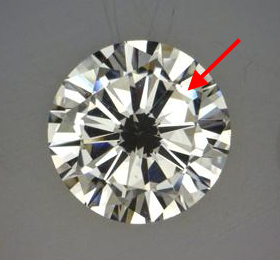
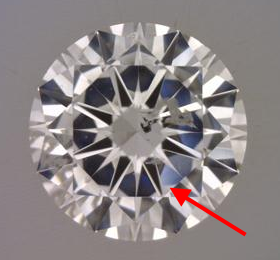
Examples of badly cut diamonds with shallow depth and lousy proportions.
The examples above show diamonds with some degree of fisheye effects in them. The severity of this phenomenon is dependent upon a number of factors such as:
2) Large table facet
3) Girdle thickness
Here’s a quick explanation of why the above factors affect the fish eye. Due to the way light travels, lower pavilion angles would cause a diamond to have less brilliance and make cut defects even more pronounced.
As light enters the diamond, the shallow depth causes light rays to be reflected from the girdle back through the table. This is the reason why a thicker girdle and larger table will make the fish eye effect more severe.
Fundamentally speaking, the fish eye effect is a result of poor cut proportions. If you follow my proportion guidelines for a round diamond here, I guarantee you will never end up with such a diamond.
Do Fish Eyes Exist in Fancy Shaped Diamonds?
Yes. Technically speaking, the fisheye effect is caused by shallow pavilion angles and large tables. Shapes like ovals, pears and hearts would also exhibit this effect if they are cut with a bad combination of angles.
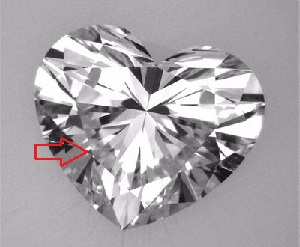
This heart shaped diamond shows symptoms of a fish eye forming under the table facet.
I’ve included a couple more examples below where you can click on the images to view problematic diamonds in 360° videos.
To conclude, the fish-eye effect is an indication of very poor cut and is very distracting to see in a diamond. Unlike subtle problems in clarity or nuances in color, you don’t need to be an expert to notice this issue. If you do see them, avoid them like the plague.
Related Articles
Leave A Comment

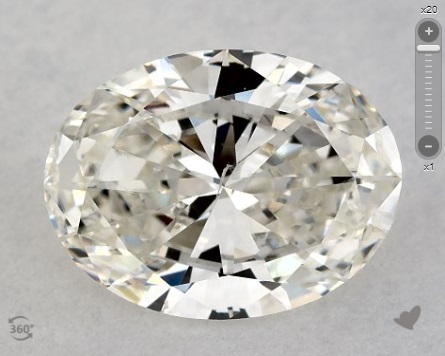
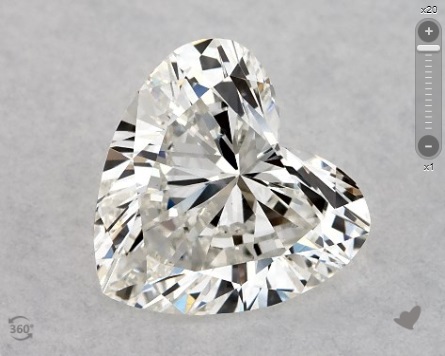
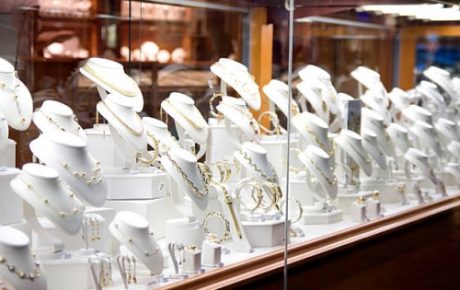

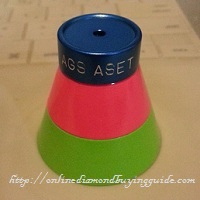
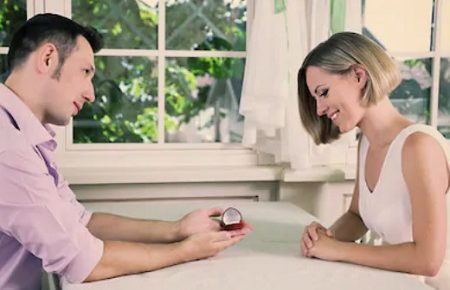









4 Comments
I have a problem with seeing diamonds going dark under sunlight.
Please help me to understand what I am noticing in my diamonds. Three of my diamonds turn a gray color when they are exposed to sunlight. I have three others that remain beautifully clear when exposed to sunlight. Two of the diamonds that appear gray in sunlight are graded with fluorescence. One is graded slight, another medium blue and the third is graded no fluorescence. I cannot find any specific information on the internet regarding diamonds graying down in sunlight (except one source saying that it is due to a shallow fish eye cut) so I would be so appreciative if you could explain what causes such a characteristic in some diamonds and not in others.
Thank you in advance for your kind reply.
P.S. These diamonds all have good clarity ratings from VSI-2 to SI-1 and I have examined them under a loupe and found no carbon spots. Colors are G’s and J’s and there is one M. All are rated as ideal cuts.
In very strong sunlight and very intense spotlighting, it is a common phenomenon to go dark under very strong lightings. However, that by itself doesn’t tell me if a diamond is well cut or poorly cut. Both types of diamonds go dark and you need to provide tangible information about the “ideal” cuts. Who graded these diamonds? Assuming the “ideal cut” diamond was one that’s rated by AGS to be 000, there is no cause for concern. If that’s a label slapped onto the stone by the jeweler, that’s something else.
Also a fish eye effect is an appearance that looks like a fisheye. This can be SEEN in ALL types of lighting environments and not only in sunlight.
Thank you for the prompt reply. I did a little research of my own and thought you may be interested in what I discovered regarding the phenomenon of diamonds that go gray or “dark” in the sunlight.
I scrolled through dozens of queries until I found the one that targeted my diamonds change of color in the sunlight. I was told that it is not normal and what I am seeing is called the “fish eye” effect which is a result of poor make and cheap rough diamonds.
You see, if all of my diamonds had the same characteristic I would have believed it was the nature of diamonds. Since I had some that were beautiful in sunlight and some that were not I had to find out the reason.
Whatever source you quoted the information from has no idea what they are talking about and it is plain misleading. A fish eye effect doesn’t appear only in sunlight and will look ugly. If a diamond had such an issue, it is going to be seen in ALL types of environments apart from in sunlight. What you think you might be seeing might be caused by poor cut proportions or inexperience on your part but it is likely not attributed to a fisheye.
Again, who is the person or grading lab that you say graded the diamond as an ideal cut? That matters. A diamond with an obvious would be penalized severely by reliable grading labs in the first place for the cut rating.